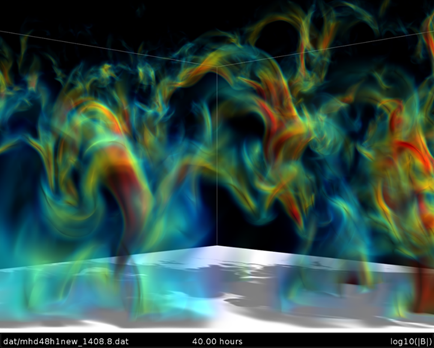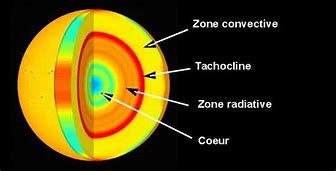The leaves are changing color, daylight hours are getting shorter and autumn is in full swing. Thanks to Earth’s magnetic field, you won’t notice the cosmic radiation, harmful particles, and solar winds that bombard Earth constantly. The stars you see at night have magnetic fields as well, but the magnetic field of a star is vastly different from Earth’s. Here are five things you probably didn’t know about stellar magnetic fields:
1. They’re different from the Sun’s magnetic field

Though the Sun is a star, its magnetic field is different from all other stars that have been measured in the universe. Up until 1947, it was believed that all stars had magnetic fields like the Sun’s. Then, Horace Babcock detected the first non-solar magnetic field in 78 Virginis, an early type A variable star. The Sun, being an older type G star, should have a magnetic field stronger than 78 Virginis. The star was found to have a remarkably stronger field than the Sun, though it was smaller and younger. Thus, the study of stellar magnetism was born.
2. They’re extremely powerful
After the detection of 78 Virginis, astronomers tested the magnetic field strength of other types of stars. Sure enough, they were all found to have magnetic fields completely different from the Sun’s. While the Sun’s magnetic field is responsible for its sunspots and corona, the magnetic fields of other stars have much greater influence. Stellar magnetic fields are several times stronger than the Sun and can cause these stars to spin faster.
3. They may be caused by The Dynamo Process
So how are these fields formed on a star? They don’t simply appear! Or do they…? Currently, it’s widely held that a nuclear reaction called the Dynamo Process causes the magnetic field of a star to form. The dynamo process involves several factors like how fast the star spins, along with its electric field that contributes to the convection, or energy transfer, within the star. Convection within the star causes the movement of stellar material, thereby igniting an electric field, whose movement in turn creates the magnetic field. The tachocline, a layer of shear between the radiation zone and the convection zone of a star, is the main reason for the generation of stellar magnetic fields

4. They give clues about star formation
One thing astronomers know for certain is that stellar magnetism gives hints about how a star has formed and how it will continue to evolve. The strength and shape of the magnetic field of a star can cause its formation or evolution to change significantly. The magnetic field of massive stars can become even stronger by the spin of the star which can cause its evolution to be altered. These massive stars are theorized to become magnetars, a class of strong magnetic stars, or neutron stars.
5. They are complex and mysterious
Stellar magnetism is an area of study less than 100 years old. Much of what is known is based on theory and conclusions drawn from detection methods that are limited by technology that hasn’t been invented yet. The Dynamo Process makes sense, but it hasn’t been proven. Additionally, there is no naturally occurring magnetic iron in space that would cause such fields. Another problem is that observations of stellar magnetic fields don’t match up with the proposed mathematics to explain them. We’ll have to wait and see how future advancements can help in understanding stellar magnetic fields.
Peer Edited by Izzie Newsome and Briana Dalton